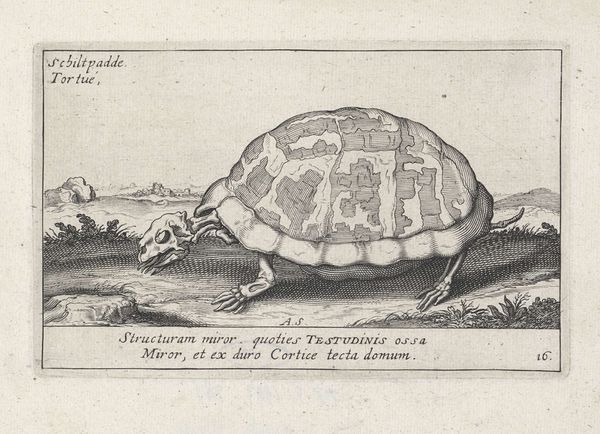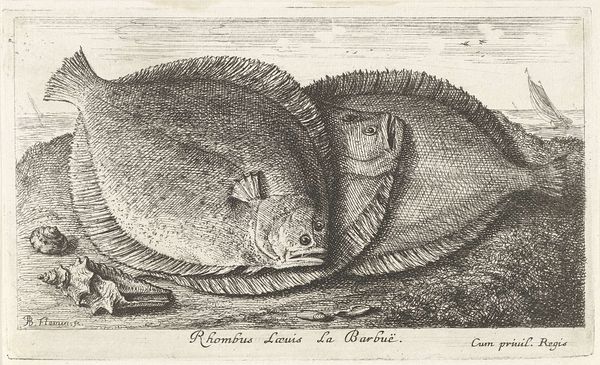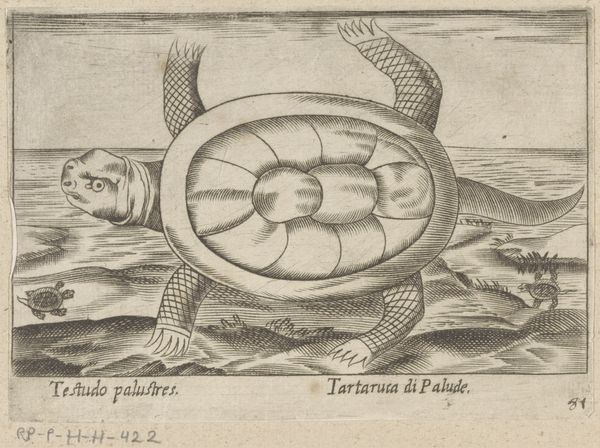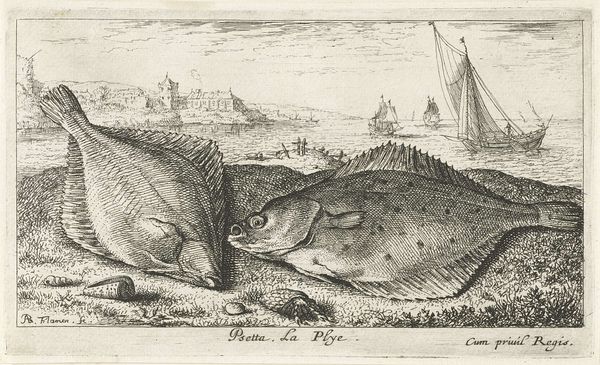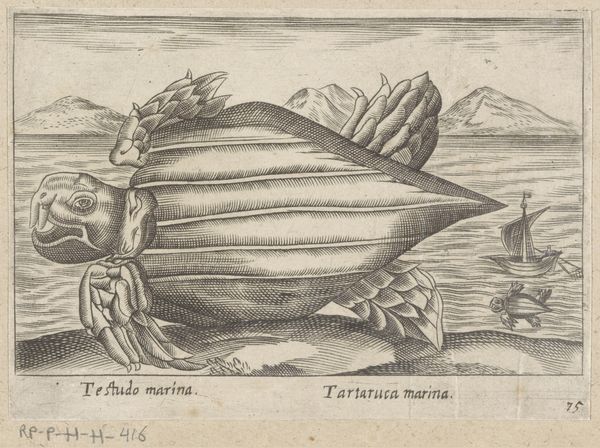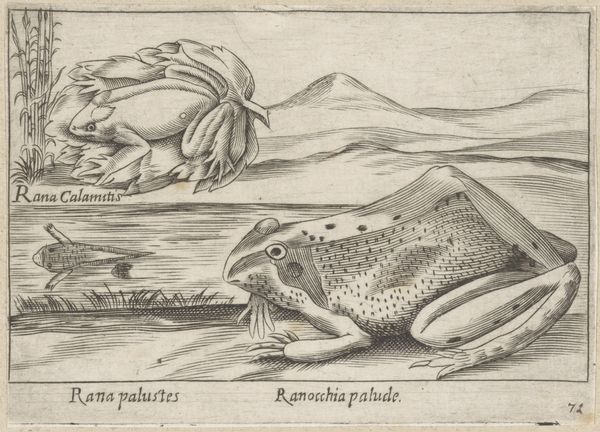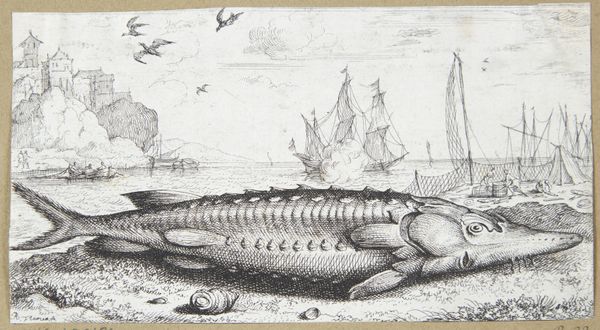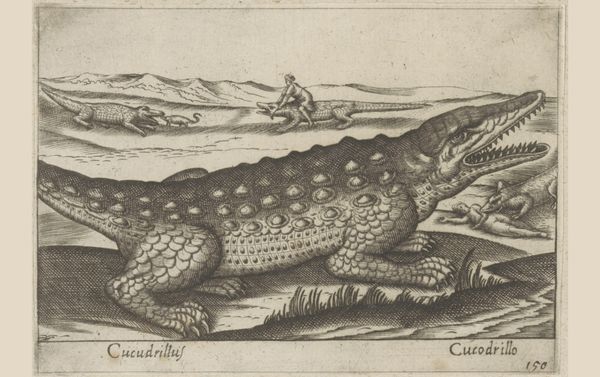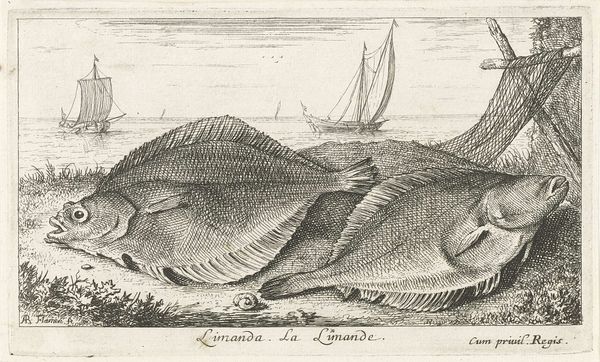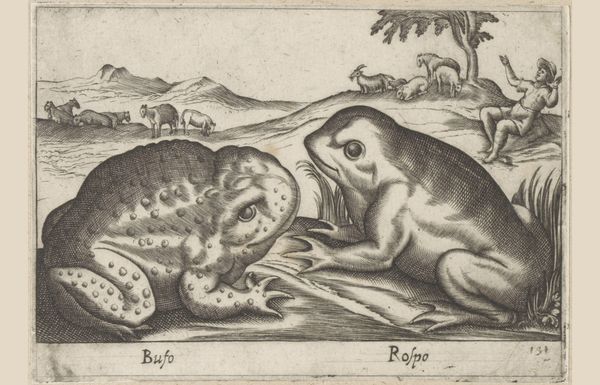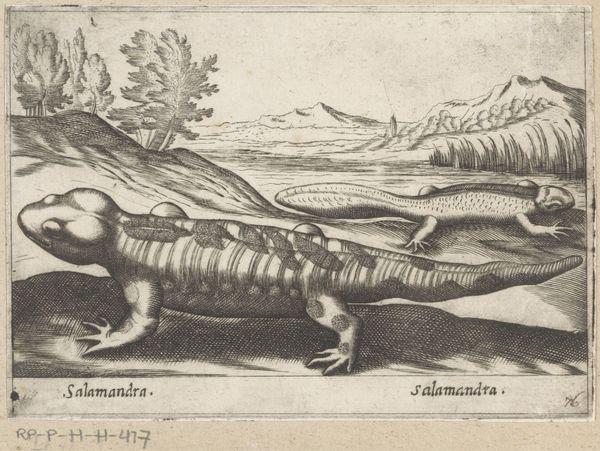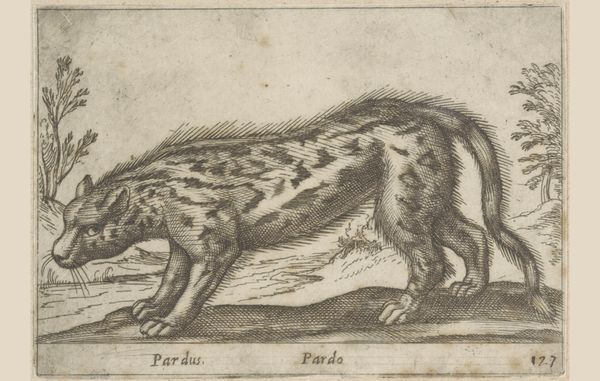
print, engraving
#
baroque
#
animal
# print
#
old engraving style
#
landscape
#
11_renaissance
#
history-painting
#
engraving
#
realism
Dimensions: height 95 mm, width 137 mm
Copyright: Rijks Museum: Open Domain
This engraving of an armadillo was made by Antonio Tempesta, a Florentine artist, during a time when the natural world was being intensely explored and documented. Notice the armadillo, centered and still, almost like a portrait. The detailed rendering emphasizes its unique, armored shell. What does it mean to picture the animal this way? During the 16th and 17th centuries, the representation of animals was tied to European colonial expansion. Images like this one often served as a way for Europeans to catalog and claim ownership over the resources and beings they encountered in the Americas. Consider how the armadillo’s foreignness might have been perceived, embodying both wonder and a sense of dominion. The emotional distance in Tempesta's depiction invites us to reflect on the complex relationship between humans and the natural world, one that continues to evolve as we grapple with issues of environmental responsibility and cultural exchange.
Comments
No comments
Be the first to comment and join the conversation on the ultimate creative platform.
